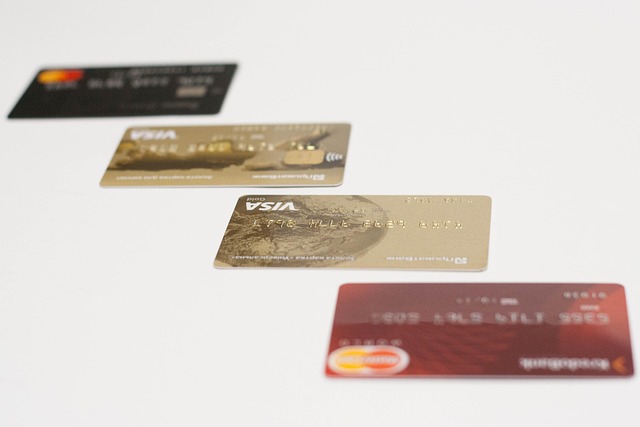Key Insights for Choosing a Credit Card: Factors That Matter Most
Selecting the right credit card can significantly impact your financial well-being and spending habits. With hundreds of options available in today's market, understanding the key factors that truly matter will help you make an informed decision that aligns with your lifestyle and financial goals. From rewards programs to hidden fees, each element plays a crucial role in determining whether a credit card will serve you well in the long term.

Understanding Credit Card Rewards Programs
Credit card rewards programs come in various forms, each designed to benefit different spending patterns and preferences. Cash back cards typically offer 1-5% back on purchases, with higher rates for specific categories like groceries, gas, or dining. Travel rewards cards provide points or miles that can be redeemed for flights, hotels, and travel experiences, often offering bonus categories and travel-related perks. Points-based systems allow flexibility in redemption options, from statement credits to gift cards and merchandise. When evaluating rewards programs, consider your spending habits, redemption preferences, and whether you’ll actually use the benefits offered.
How Credit Card Fees Impact Long-Term Value
Annual fees can range from zero to several hundred dollars, making it essential to calculate whether the card’s benefits justify the cost. Beyond annual fees, watch for foreign transaction fees (typically 2.5-3% of purchases made abroad), balance transfer fees (usually 3-5% of the transferred amount), and cash advance fees. Late payment penalties can reach $40 or more, while over-limit fees may apply if you exceed your credit limit. Some cards waive the annual fee for the first year, but remember to factor in the ongoing cost when calculating long-term value. A card with a $95 annual fee that provides $200 in annual benefits still offers net positive value.
Evaluating Introductory Offers and Bonus Features
Sign-up bonuses can provide substantial immediate value, often requiring you to spend a specific amount within the first few months. Common offers include 50,000-100,000 bonus points or $150-$500 cash back after meeting spending requirements. Introductory APR periods can offer 0% interest on purchases or balance transfers for 12-21 months, providing breathing room for large purchases or debt consolidation. However, be aware of what happens when promotional rates expire, as regular APRs typically range from 16-29%. Additional features like airport lounge access, rental car insurance, extended warranties, and purchase protection can add significant value for the right user.
The Role of Credit Card Security and Fraud Protection
Modern credit cards employ multiple security layers to protect your financial information and transactions. EMV chip technology makes cards much harder to counterfeit than traditional magnetic stripe cards. Many issuers offer real-time fraud monitoring that can detect unusual spending patterns and temporarily freeze your account if suspicious activity occurs. Zero liability policies ensure you won’t be held responsible for unauthorized charges when reported promptly. Virtual card numbers for online shopping, mobile wallet compatibility, and the ability to instantly lock your card through mobile apps provide additional security layers that have become increasingly important in our digital economy.
Expert Tips for Comparing Credit Card Options
Credit card markets vary significantly across different regions worldwide, with some countries offering more competitive rewards programs while others focus on lower fees and basic functionality. In markets like the United States and Canada, cashback and travel rewards cards dominate, while European markets often emphasize lower fees and practical benefits. Asian markets frequently feature cards tied to specific retailers or transportation systems. Currency considerations become important for international travelers, as some cards offer better exchange rates or waive foreign transaction fees entirely. Research your local market conditions and regulations, as credit card terms and available features can vary significantly by country.
Real-World Cost Comparison of Popular Credit Card Types
Understanding the actual costs associated different credit card categories helps you make informed decisions based on your financial situation and spending patterns.
| Card Type | Annual Fee Range | Typical APR | Rewards Rate | Best For |
|---|---|---|---|---|
| Basic Cash Back | $0-$99 | 16-24% | 1-1.5% | Everyday spending |
| Premium Cash Back | $95-$550 | 17-25% | 1.5-6% categories | High spenders |
| Travel Rewards | $0-$695 | 16-27% | 1-5x points | Frequent travelers |
| Balance Transfer | $0-$199 | 15-26% | 0-1% | Debt consolidation |
| Secured Cards | $0-$99 | 22-27% | 0-1% | Building credit |
Prices, rates, or cost estimates mentioned in this article are based on the latest available information but may change over time. Independent research is advised before making financial decisions.
Conclusion
Choosing the right credit card requires careful consideration of multiple factors that extend beyond flashy sign-up bonuses or rewards rates. The most suitable card for your situation depends on your spending habits, financial goals, and lifestyle preferences. By thoroughly evaluating rewards programs, understanding fee structures, assessing security features, and comparing real costs across different card types, you can select a credit card that provides genuine long-term value. Remember that the best credit card is one that complements your financial behavior while offering benefits you’ll actually use, all while maintaining reasonable costs and robust security features.



